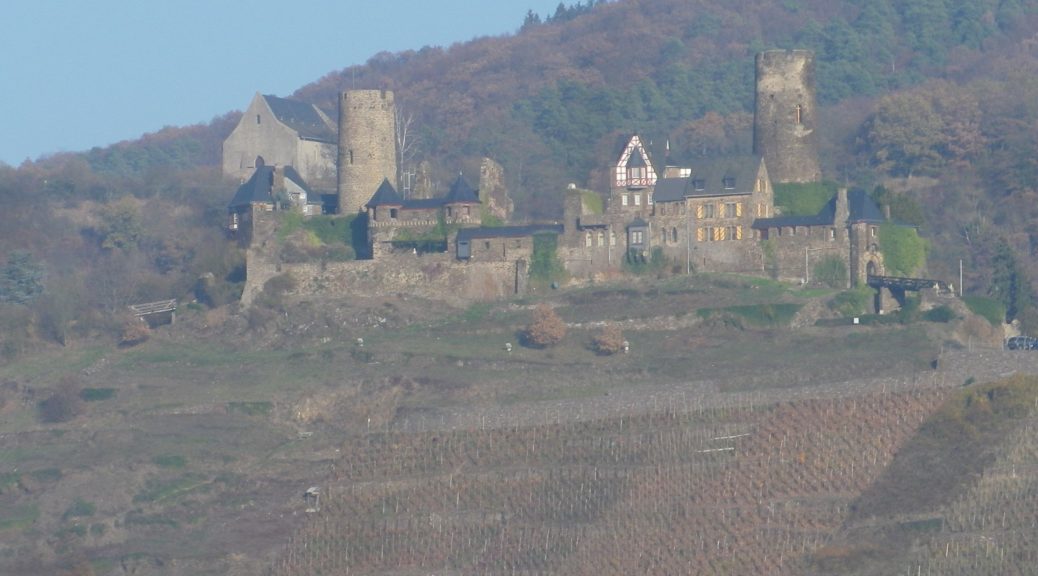To many wine lovers, the Middle Rhine means exceptional Riesling. To me, the lower Moselle means scenery that is just as dramatic, in a region that is far quieter, with Riesling that is just as good. All that adds up to a wonderful vacation in the heart of one of Germany’s most well-known wine regions.
One of the great things about the Moselle valley is that most towns are all connected by a rail system on the left bank. Hence, going from Koblenz (on the Rhine), upriver to Trier, is both convenient and relatively inexpensive. I began in Lehmen, and hiked, on a variety of paths to Loef, where I spent the night. While I had completed hikes in Hatzenport (just one village away upriver), and another in Winningen, a few miles downriver, I found this short stretch of the valley particularly attractive. Not only were there several hiking trails to choose from (see the accompanying Nutshell here), the scenery was striking, the restaurants very good, and the Rieslings delicious, for less than many comparable Middle Rhine wines.
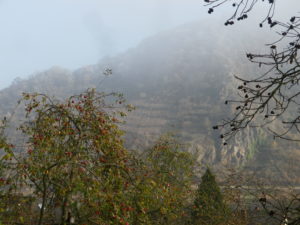
The trails start in the villages along the river, and climb steeply up the cliffs behind them. Due to the steepness of the slopes, the vineyards are small and steep, only rising to a certain point. Above them is forested area, and between it and further above, the trail runs, sometimes narrow and twisting over rock and tree roots, with clear views up and down the valley.
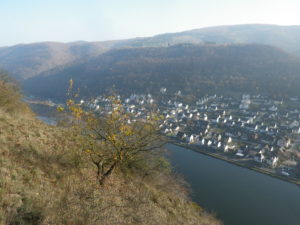
Coming to the Ausonius Stone, named for a Late Roman era writer who waxed poetic about the beauty of the area even back them, take time to enjoy the wide-ranging and stunning views. The river snakes left and right, bouncing off one steep cliff or another, eventually disappearing around distant curves. Castles and ancient towers appear on the other side. But above the stone, at the top of the trail, there is a plateau. Too exposed (and flat) for vines, other agricultural products grow here nowadays.
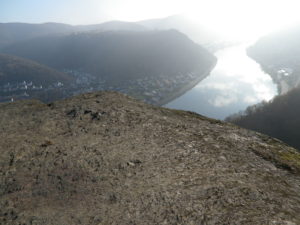
From the Ausonius Stone, one trail leads to the village of Kattenes on the river, and the other trails lead uphill to the small village of Moselsuerch, surrounded by fields at the top of the plateau. I followed the latter, before rejoining the Wuerzlaysteig trail downhill, toward Kattenes, through a narrow ravine filled with old mills along a rushing stream.
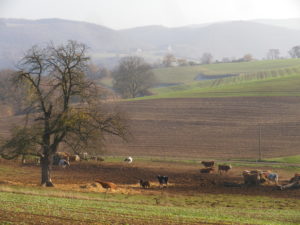
Leaving the ravine, the trail followed a Way of the Cross, with 14 pillars depicting scenes of Christ’s crucifixion. Laid out along perhaps a kilometer long trail meandering through deciduous woods and a meadow, it is an ideal spot for quiet reflection as one hikes along.
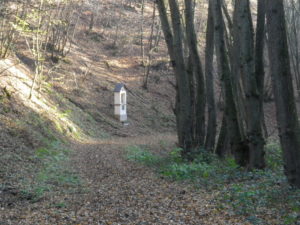
Finally entering Loef, I had an opportunity to explore the old village. One road leads along the river, and another road parallels it one block away from the river. It is a typical set up for Moselle villages, squeezed between the river and the cliffs. Loef happens to be a bit larger, and more developed, with a nice residential area up behind the old center of the village. This is where my hotel happened to be. Soaking in the hot tub, then enjoying a glass of Moselle Riesling from the spa bar, I looked out across at steep cliffs and down on the river, appreciating the beauty that is the Lower Moselle, its great trails, and its wine.
